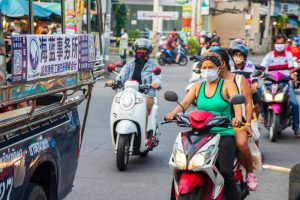Governments across Southeast Asia are tightening entry and quarantine requirements in response to the emergence of the new and potentially more transmissible Omicron variant of COVID-19. While few cases of the new variant have been identified in the region, its emergence threatens the region’s gradual emergence from a year of rampant outbreaks of the virus.
The identification late last month of the new strain of COVID-19 – referred to by the Greek letter Omicron after the World Health Organization tactfully opted to skip over the letters Nu and Xi – has prompted governments across the world to reimpose travel bans and halt cautious plans for economic reopening.
That is true of Southeast Asia, which has just emerged from a challenging year in which COVID-19 ran rampant across the region, after being relatively well contained for the first year of the pandemic. Indonesia, Singapore, the Philippines, Malaysia, Thailand, Cambodia, and Vietnam have all imposed restrictions on travelers from the numerous nations, most of them in Africa, which have confirmed cases of the Omicron variant.
This has been accompanied by the tightening of testing and quarantine regimes for arrivals. In Singapore, where Health Minister Ong Ye Kung this week likened the emergence of the Omicron variant to the latest twist in a game of “snake and ladders,” incoming air travelers, including Singaporean citizens and residents, will from Friday will be subject to a tightened testing regime.
Indonesia has introduced a 14-day quarantine requirement for any nationals who have travelled to any of the 11 countries deemed at high-risk for Omicron, and raised its quarantine requirement for all arrivals from three to seven days. The Philippines has likewise temporarily suspended a decision to allow fully vaccinated tourists into the country after the emergence of the Omicron variant and banned all travelers from 14 countries in Africa and Europe, a measure that will remain in place until at least December 15.
In Thailand, Omicron could slow the country’s planned opening to foreign travelers, and the delay revival its economically vital tourism industry. Under the Thai government’s Test & Go scheme, introduced on November 1, the country has permitted vaccinated arrivals from 63 nations and territories to enter and take a RT-PCR test upon arrival. It had proposed allowing visitors to undergo faster antigen tests, but this move will now reportedly be postponed.
Meanwhile, Malaysia will temporarily ban the entry of travelers from countries that have reported the Omicron coronavirus variant or are considered high-risk, and Vietnam has suspended flights to and from seven African countries. Cambodia has done the same for 10 African nations.
While only a handful of Omicron cases have been identified in Southeast Asia, and the virulence of the new strain remains the subject of some conjecture, the region’s governments are right to be taking it seriously.
The mutation comes at a particularly bad time for the Philippines, which was one of the worst-hit nations during last year’s surge of COVID-19 cases, notching more than 2.8 million confirmed cases since the beginning of the pandemic. The country’s daily infection toll dropped to 425 cases nationwide on Tuesday, its lowest tally for nearly 17 months. But its vaccination rate is the lowest in Southeast Asia outside crisis-hit Myanmar. Just 36 percent of the population has received one dose of vaccine, and only 28 percent are fully vaccinated.
While the government has plans to ramp up its vaccination campaign in the coming days, the country also stands on the cusp of the holiday season, when millions of overseas Filipino workers traditionally fly home to celebrate Christmas with their families, something that could lead to the rapid spread of the Omicron variant. In Indonesia, travel for Eid al-Fitr celebrations in May similarly helped spread the virus across the archipelago.
Despite its impressive rates of vaccination – the country had fully vaccinated 77 percent of the population as of this week – Malaysia’s government is also pushing ahead with plans to hold elections in the state of Sarawak on December 18. This recalls the state elections in Sabah in September 2020, which were responsible for Malaysia’s first wave of the virus.
The past year has been a painful one for most Southeast Asian nations. Over the past four months the region has slowly and with painstaking effort contained runaway outbreaks of the virus, distributed vaccines into remote regions, and clawed its way back to something approaching normality. The ultimate impact of the Omicron variant on Southeast Asian nations remains to be seen. With some luck, and rapid evasive action, it could well avoid fresh outbreaks of the virus. Whatever happens, however, the new mutation will be an ever-present reminder that every inch of territory gained against COVID-19 will be won and held only at significant cost.

































